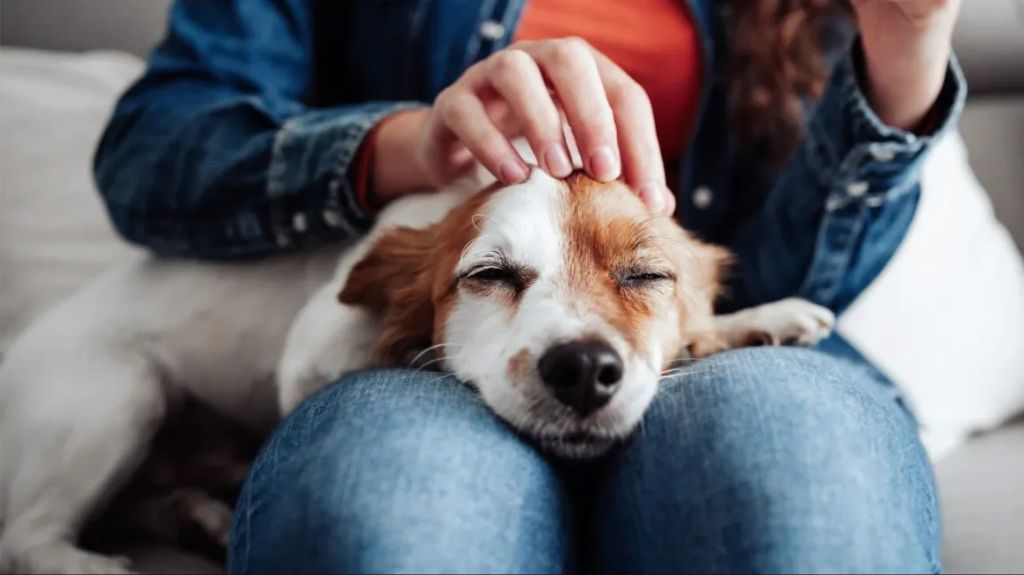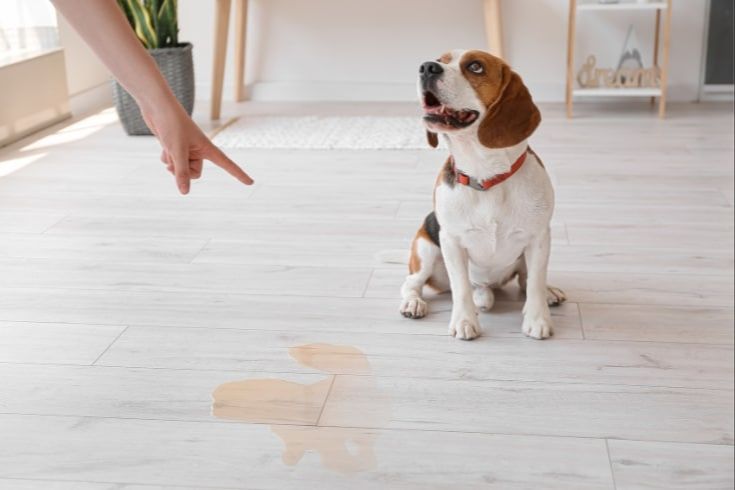Introduction
House training a puppy is an important process that teaches them to eliminate only in designated areas. While it does take time and consistency, it’s a key factor in helping your dog become a happy member of your household and avoids unwanted accidents around the home. Understandably, many owners want to know if their puppy will ever be fully potty trained. The good news is that with the right approach, most puppies can be successfully house trained over time.
The house training process involves establishing a routine, providing positive reinforcement, and using management tools like crates and tethers. Puppies don’t have full bladder or bowel control until around 6 months of age, so accidents will happen during this stage. Consistency and patience are key – it can take anywhere from a few weeks to a year for a puppy to be fully potty trained. Setting realistic expectations will make the process easier on both you and your pup.
While house training takes work, the payoff is significant. Your home will stay clean and your bond with your dog will grow through this training process. If you stick to a regular routine, reward successes, and continue reinforcing desired behaviors, you can achieve reliable house training for your pup.
House Training Basics
The key to successful house training is taking your puppy outside frequently and rewarding them when they go potty outside. Puppies need to go out first thing in the morning, after eating or drinking, after playtime, and before bedtime. Be consistent and take them to the same spot each time. When your puppy goes potty outside, praise them enthusiastically and give a treat right away so they associate going outside with positive rewards.
It’s also important to thoroughly clean any indoor accidents with an enzymatic cleaner to remove the smell. If your puppy smells urine or poop where they went before, they will likely go again in the same spot inside. Use paper towels to absorb as much as possible, then spray an enzymatic cleaner and let it sit for 5-10 minutes before wiping clean.
Taking your puppy out often and rewarding them for outdoor potties while cleaning up any indoor accidents will set the foundation for successful house training.
Create a Routine
One of the most important things you can do when potty training your dog is to create a consistent routine. As the American Kennel Club explains, “Dogs thrive on predictability and routine.” https://www.chhs.niu.edu/child-center/resources/articles/potty-training.shtml Sticking to a regular schedule for feeding, playing, taking your dog outside, and other activities helps your dog anticipate when they will need to go potty. For example, taking your dog outside first thing in the morning, after meals, after playtime, and before bedtime gives them several opportunities per day to relieve themselves at predictable times.
Puppies have small bladders so they may need to go out more frequently, such as every 30-60 minutes when they are active and awake. Adult dogs can usually hold it for longer stretches, but still benefit from a routine. Avoid giving your dog free access to food throughout the day, as this makes it harder for them to develop regular bathroom habits.
Setting a routine takes commitment from you as an owner, but it pays off by helping your dog learn to “hold it” until appropriate times. Be patient as you stick to the routine and offer plenty of praise when your dog potties at the right time and place.
Crate Training
Crate training is a very effective method for house training puppies and dogs. The idea is that dogs are naturally inclined to keep their sleeping area clean, so they will try to hold their bladder and bowels while in the crate if they can (Source). When you can’t directly supervise your puppy, putting them in the crate prevents accidents around the house.

To make crate training successful, you want your puppy to have positive associations with the crate. Feed them meals in the crate, give treats and toys inside, and start with short periods of time, building up gradually. Never use the crate for punishment. The goal is for your puppy to see the crate as their safe, relaxing den.
Watch for Signals
Dogs will often give signals when they need to go potty. Learning to recognize your dog’s individual signals can help you detect when it’s time to take them out. Some common potty signals to watch for include:
- Circling or turning in circles
- Sniffing around the floor
- Going to the door and looking at you or scratching at the door
- Whimpering or barking to get your attention
- Becoming restless
- Interrupting play or suddenly stopping an activity
As soon as you notice any of these signs, immediately take your dog outside to their designated potty area. With consistency, your dog will learn to hold it until they are taken outside. Taking your dog out as soon as signals appear can help reinforce this behavior. Be patient, as it can take some time for patterns to emerge and for you to learn your individual dog’s signals. But paying close attention will help you detect potty needs sooner.
It’s especially important to watch for signals during key times when dogs are most likely to need to go, like first thing in the morning, after naps, during and after meals, and before bedtime. Taking your dog out preventatively at these times can also help avoid indoor accidents.
With time and consistency, you’ll be able to learn your dog’s schedule and signals. This allows you to let them out right when needed, helping optimize house training.
Be Patient
House training a puppy takes time and patience. Puppies physically cannot control their bladder until they are around 6 months old, so accidents should be expected during the training process. Do not get angry or punish your puppy for having accidents in the house, as this can delay the training process. Remain calm and be consistent with taking your puppy outside frequently.

According to the American Kennel Club, puppies cannot control their bladder until they reach about 16 weeks old or around 4 months. Generally, puppies can hold their bladder for about as many hours as their age in months plus one. So a 3 month old puppy can hold its bladder for about 4 hours. Expect to take an 8 week old puppy outside every hour and slowly extend the time between potty breaks as your puppy ages.
It’s normal for training to last until 6 months of age. Be patient, consistently take your puppy out according to its needs, and positively reinforce successes. With time and consistency, your puppy will learn to communicate when it needs to go outside and have full bladder control.
Reward Success
An essential part of potty training is rewarding your puppy every time they go potty in the right place. As soon as your puppy finishes going potty outside where they are supposed to, be sure to give them lots of enthusiastic praise such as “Good potty!” along with treats and pets. This positive reinforcement helps cement the behavior you want. According to the Humane Society, “Before rewarding, be sure they’re finished. Puppies are easily distracted and if you praise too soon, they may forget to finish until they’re back in the house.” 1 Giving your puppy a reward immediately after pottying outside is crucial for reinforcing the training.
Manage the Environment
Managing your home environment is crucial for potty training success. You’ll want to limit access, use tethers, and put up baby gates during training to prevent accidents and make sure your child can easily get to the potty when needed.
Start by limiting access to parts of the home. Keep doors closed to rooms like the basement or bedrooms that don’t have a potty. You can also use baby gates to block off areas.
Tethering, which means keeping your child near you on a leash or harness, allows you to keep an eye on them. Take them with you room-to-room so you can watch for signals they need to use the potty.
Potty training is all about setting your child up for success. Managing the environment removes temptation and accidents. It also lets you observe them closely during this learning period.
For more on prepping your home, see “The Essential Items for Potty Training” from Parents.com.
Troubleshooting Problems
Despite your best efforts, some dogs may still suffer from potty training troubles, such as excited urination, marking, and incomplete training. However, there are solutions to get back on track.
For excited urination, try to minimize exciting triggers before taking your dog out or greeting them. Remain calm, avoid excessive petting or praise, and take your dog out immediately upon arrival home to avoid accidents (The Labrador Site, 2023).

Marking can be curbed through consistent neutering/spaying, vigilant supervision, and immediately cleaning soiled areas with enzymatic cleaners. Restrict access to previously marked areas and reward your dog for going in designated spots (Peach on a Leash, 2019).
If your dog was not fully potty trained earlier in life, go back to basics. Re-crate train if needed and stick to a strict routine of taking them out frequently. Use positive reinforcement and remain patient. With consistency, even adult dogs can overcome incomplete training (The Labrador Site, 2023).
Be Consistent
Potty training takes time, persistence and consistency – stick with it! Puppies do not become fully housetrained overnight. It can take 4-6 months for a puppy to be fully potty trained. The most important thing is to stick to a consistent schedule and not become frustrated or impatient with your puppy. Remember that accidents will happen during this long process. When they do, calmly clean up and get back on schedule. Scolding or punishing your puppy for accidents is counterproductive. With persistence and consistency, your puppy will learn to wait until it’s time to go outside. Be patient and celebrate the successes along the way. Consistency is key for developing good potty habits.

According to the AKC, a good rule of thumb is that puppies can usually hold their bladder for their age in months plus one. So a 3 month old puppy should be able to hold it for about 4 hours. Use this as a guide to determine how often you need to take your puppy out. Stick to a schedule and be consistent.
